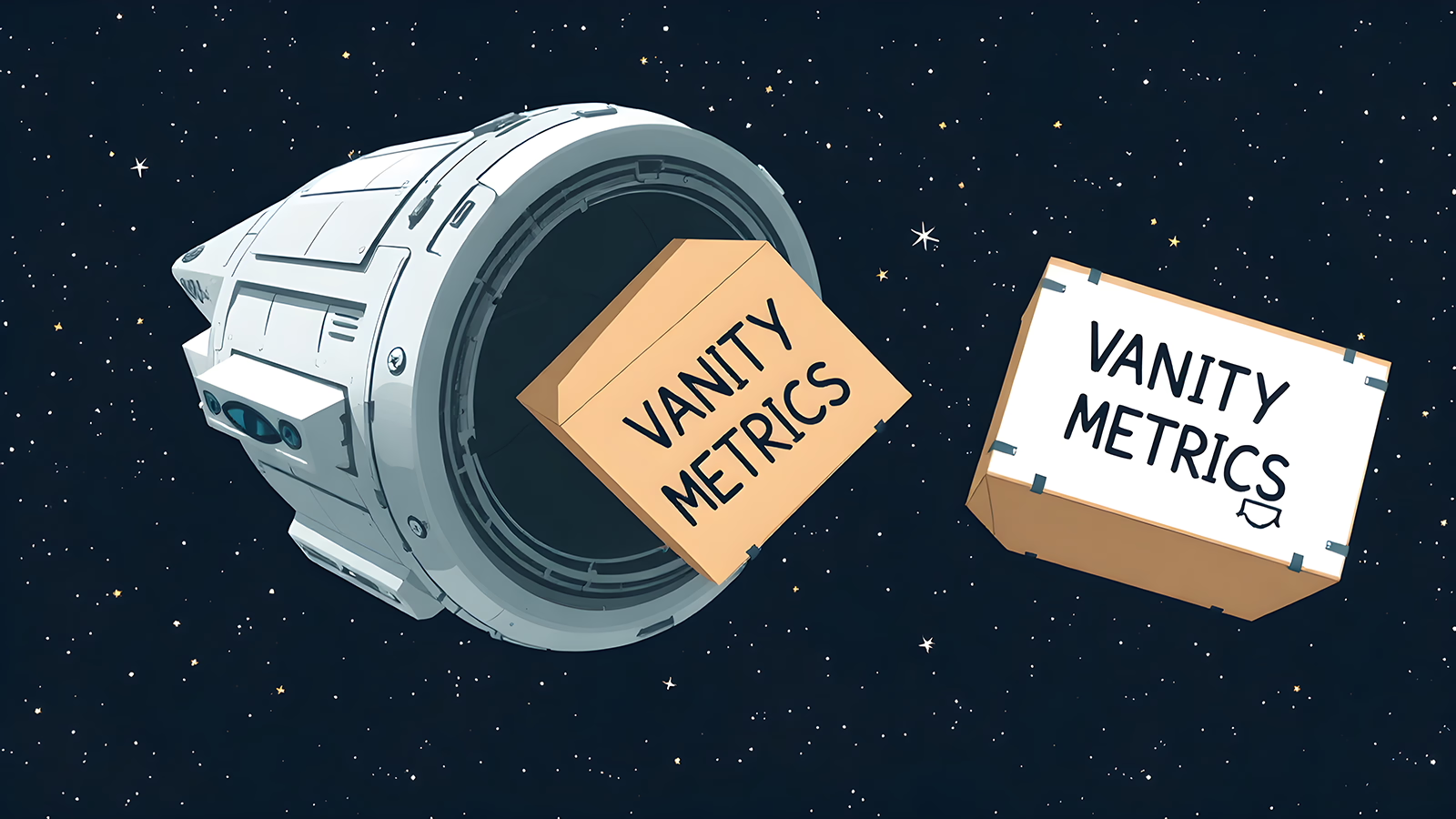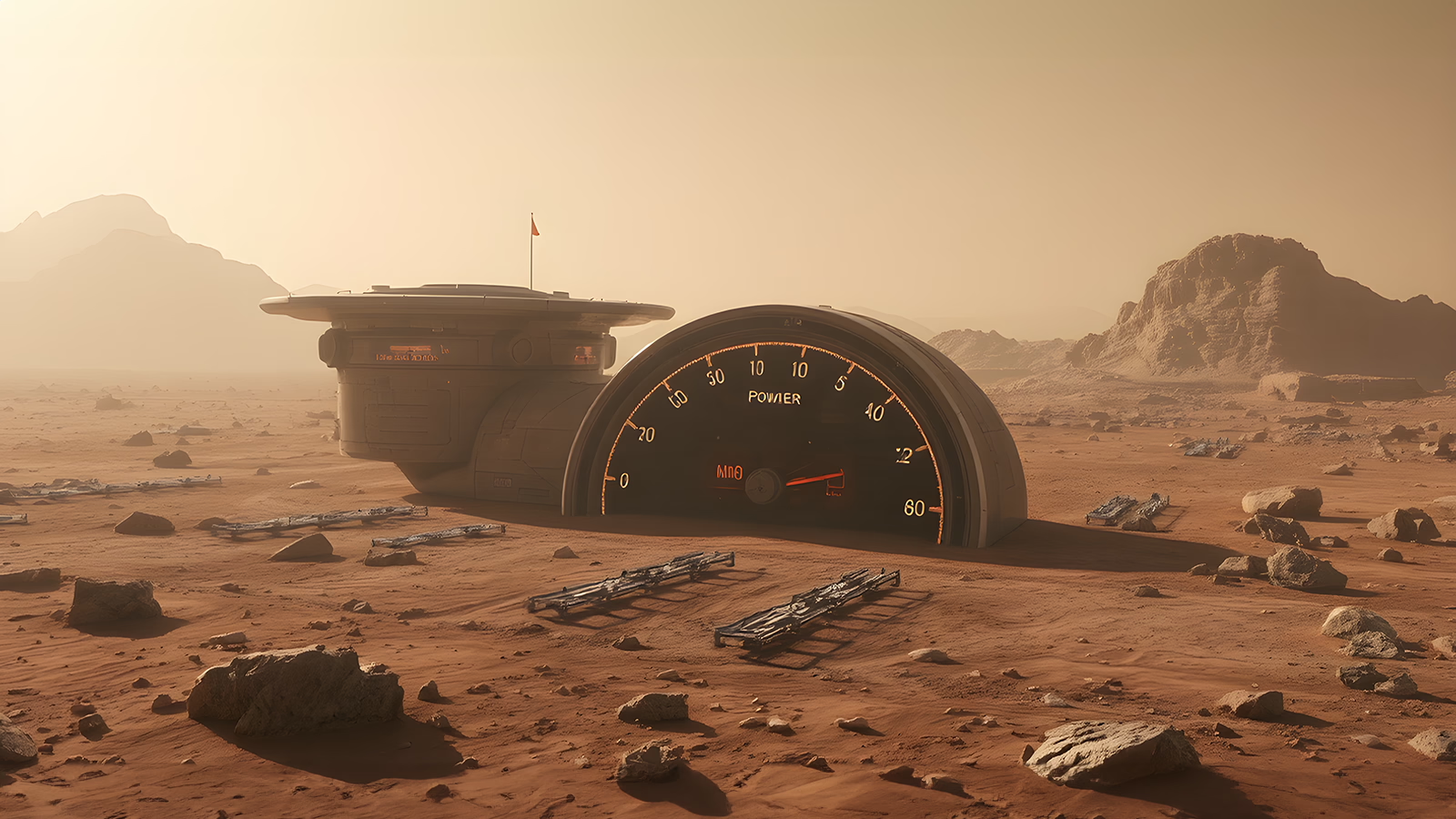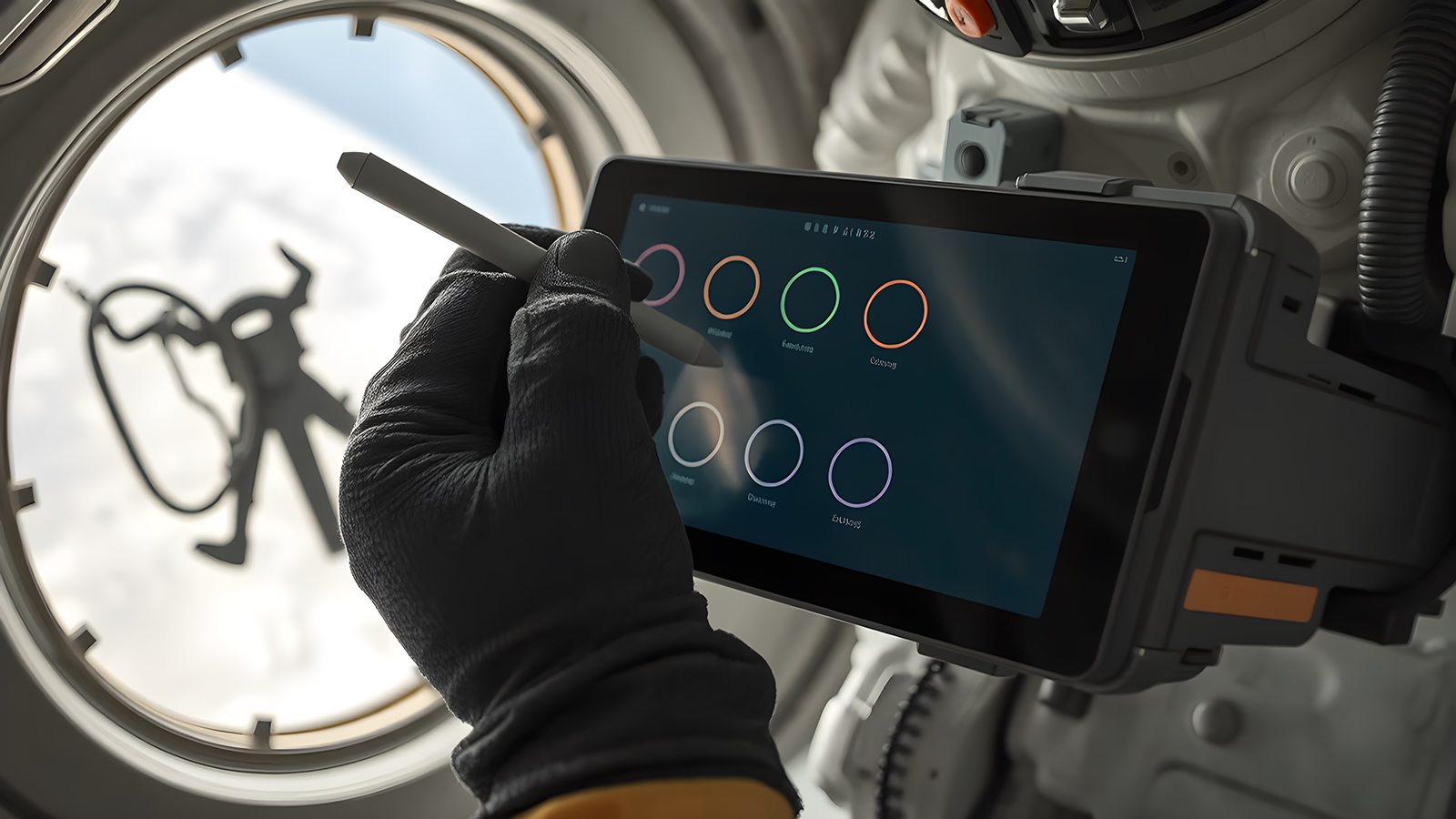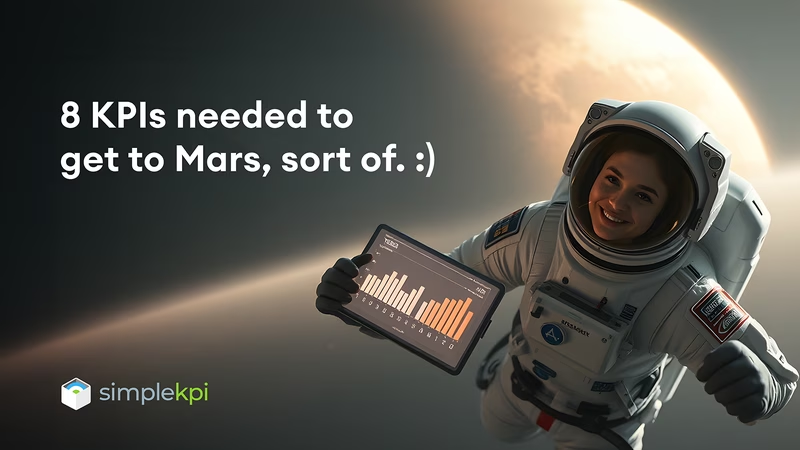Picture this: a couple of drinks deep, trying to make Key Performance Indicators (KPIs) sound less like corporate jargon and more like... well, anything else. The conversation drifted, as it often does, to SpaceX and the grand ambition of Mars. That's when the question landed: 'Alright, so if you were *actually* using KPIs to plan a Mars mission, what would they even be? Like, give me some real examples.'
While applying corporate metrics to interplanetary travel might seem absurd, the principles behind KPIs – measuring progress towards specific goals – are fundamental to complex endeavors like space exploration.
Both NASA and SpaceX outline clear objectives for Mars missions, which inherently require measurable indicators to track success.
Forget the usual work dashboard for a minute.
Picture managing the mission's critical data feed. With communication delays reaching up to 24 minutes each way, real-time oversight is impossible. This delay mandates absolute focus: there's zero capacity for handling or analyzing any data not vital for survival and mission success.
We're talking bare-bones essential data only.
If you had to strip everything down to the absolute critical few numbers – say, the eight metrics that genuinely mean the difference between establishing a foothold and becoming a very expensive, very permanent feature of the Martian landscape – what makes that essential list?" Please remember this is just a bit of fun.
Picking Our Martian Metrics...
Alright, before we start picking our dials, let's set some ground rules. We're talking about a multi-year mission with insane complexity and risk. Our chosen 8 KPIs can't just be 'nice-to-haves'. They need to cover the whole shebang: getting there, staying alive, doing the science, and hopefully not breaking the bank (or the spaceship).
No vanity metrics allowed!

Sorry, no tracking 'likes' on the spaceship's Instagram feed (#MarsLife!). These KPIs absolutely must be:
- Actionable: Seeing the number change must tell you whether you need to do something, now. Is it time to course-correct, fix something, or celebrate a milestone?
- Critical: If this number goes deep into the red, it's genuinely panic stations. It signals a fundamental threat to the mission's success or survival.
- Predictive (Ideally): The best KPIs give you a heads-up. They should indicate future success or looming failure, giving you time to react.
- Holistic: Together, they need to paint a picture of the overall mission health – covering the tech, the humans, the resources, and the actual progress.
Yeah, I know, a real Mars mission has thousands of sensors monitoring every valve and heartbeat. But this exercise forces us to think like laser-focused commanders, not data hoarders. It’s about signal, not noise.
The "Mission Critical 8" - Our Only Dials to Mars:
Okay, decision time. Here are my picks for the only 8 dials I'd want on my Martian command console:
1. The "Did We Even Leave Orbit?" Gauge (Launch & Transit Integrity)
Mars: This is fundamental. Did the ridiculously complex launch sequence work? Are we actually headed towards Mars and not, say, Venus? Is the spacecraft holding pressure and maintaining trajectory during the months-long cruise? It tracks major milestone success (e.g., Trans-Mars Injection Burn: Complete/Nominal) and critical systems integrity during transit.
Earth Parallel: Think Core Product/Service Viability. Did your product launch successfully without critical bugs? Is your core service platform stable and performing as expected? Is your fundamental business strategy actually working in the real world?
2. The "Are We Breathing?" Monitor (Life Support & Crew Well-being)
Mars: Obvious, right? This tracks the absolute essentials for keeping the squishy humans alive: Oxygen levels, CO2 scrubbing efficiency, water recycling rate, internal temperature, radiation levels, and maybe a synthesized 'Crew Health Index' based on key vitals. If this dips, nothing else matters.
Earth Parallel: Team Health & Core System Stability. What's the equivalent of oxygen for your business? Maybe it's Key Personnel Retention (can't fly without pilots!), Critical Infrastructure Uptime (is the website/platform actually working?), or even Customer Support Effectiveness (are users getting life-saving help when needed?). It’s about the fundamental health of your people and operational backbone.
3. The "Don't Become a Crater" Indicator (Landing Sequence Success Rate)
Mars: The infamous "7 minutes of terror." This tracks the successful completion of each critical step in the landing sequence: heat shield integrity, parachute deployment, radar lock, engine firing, touchdown velocity. It's a series of go/no-go gates where failure is catastrophic.
Earth Parallel: Critical Conversion Point Success. This is your make-or-break moment. For e-commerce, it’s the Checkout Completion Rate. For SaaS, maybe the Trial-to-Paid Conversion Rate. For sales, the Contract Signature Rate. It's that final, crucial step where the entire preceding effort pays off... or doesn't.

4. The "Red Planet Gas Gauge" (Critical Resource Consumption Rate)
Mars: You packed finite resources for a long trip. This dial tracks consumption rates of irreplaceable supplies – propellant, power reserves, water, oxygen, food – against the mission plan. Are you burning through fuel faster than expected? Will your solar panels generate enough power through the Martian winter? Running out is not an option.
Earth Parallel: Budget Burn Rate & Resource Allocation. Are you spending money faster than planned? How quickly are you using up server capacity, inventory, or even just your team's available hours? This KPI ensures your mission (project, quarter, business) is sustainable and won't run out of gas before reaching its goal.
5. The "Science & Discovery Scoreboard" (Mission Objective Progress)
Mars: You didn't go all that way just for the view! This tracks progress against the actual reason for the mission: Kilometers driven by the rover, number of geological samples collected and analyzed, key experiments completed, volume of scientific data returned. It answers: Are we achieving what we set out to do?
Earth Parallel: Key Goal Achievement Rate. This is about tracking progress on your primary objectives. It could be New Feature Adoption Rate (are people using the thing you built?), Qualified Leads Generated, Market Share Growth, or Project Milestones Completed. It measures tangible output directly related to your strategic goals.
6. The "Fix-It-Fast" Tracker (Mean Time To Recovery - MTTR)
Mars: Stuff will break. A solar panel might glitch, a communication link might drop, a habitat system might leak. This KPI measures how quickly the crew (or ground control) can diagnose and fix critical failures. Long downtimes increase risk exponentially.
Earth Parallel: Project Velocity & Time-to-Market. Are you hitting your sprint goals? Is the project on track to meet its deadline? How long does it take to get new features or products launched? Speed and predictability matter in competitive environments.
7. The "Are We Still On Track?" Clock (Schedule Adherence / Velocity)
Mars: The mission runs on a complex timeline dictated by orbital mechanics, resource constraints, and communication windows. This KPI tracks whether key phases (transit, orbital insertion, surface operations, return journey) are happening on schedule. Delays cost resources, increase exposure to risks, and might even mean missing the window home.
Earth Parallel: Project Velocity & Time-to-Market. Are you hitting your sprint goals? Is the project on track to meet its deadline? How long does it take to get new features or products launched? Speed and predictability matter in competitive environments.
8. The "Mission Control Confidence" Metric (Synthesized Risk/Health Score)
Mars: Instead of overwhelming Houston with raw data, this is a single, calculated score. It synthesizes inputs from the other critical KPIs, known anomalies, and resource levels into an overall mission status: Green (All nominal), Yellow (Caution, monitor closely), Red (Serious anomaly, requires immediate intervention/possible abort). It’s the ultimate gut-check indicator.
Earth Parallel: Overall Business/Project Health Score. This is your C-suite metric. It might be a weighted score combining financial health (e.g., Operating Margin), customer health (e.g., Net Promoter Score - NPS), and operational health (e.g., Key Project Status). It provides a single, high-level view of whether the entire venture is truly healthy or heading for trouble.
Why These 8? And What Got Left Back on Earth?
Look at the mix: We've got technical success (launch, landing, systems), resource management (fuel gauge), human factors (life support, recovery speed), progress against actual goals (science scoreboard, schedule), and an overall health check. It’s designed to give a holistic, actionable view without drowning us in minutiae.
What didn't make the cut? Things like the number of stunning photos tweeted from Mars (#NoFilterNeeded). The precise mineral composition of every single rock licked by the rover (important science, yes, but maybe not one of the top 8 mission survival dials). The crew's average daily caffeine intake. These things might be interesting, maybe even useful in a deeper dive, but they aren't the absolute core indicators of "Are we going to make it and do the job?"
Too many KPIs create noise, like constant static on the radio back to Houston. They distract from the critical signals. Choosing just eight forces brutal clarity.

Bringing Your Mission Back to Earth: Find Your Critical 8
Okay, commander, your turn. Forget Mars for a second and think about your current big mission. Launching that startup? Nailing that critical project? Transforming your department? Growing your side hustle into your main gig?
What's your Mars?
Now, grab a napkin, a whiteboard, whatever works. If you could only have 8 dials on your dashboard for that specific goal, what would they be? Be ruthless. Ask yourself for each potential KPI:
- If this number tanks, is it a genuine catastrophe for my goal?
- Does knowing this number force me to make a decision or take action?
- Does it measure real progress, not just activity?
Cutting through the data fog to find your 'Mission Critical 8' isn't just a theoretical exercise. It’s how you maintain focus under pressure. It's how you allocate resources effectively. It's how you make faster, smarter decisions. It’s how you dramatically increase your odds of planting your flag on your Mars.
Conclusion: Less Blinking Lights, More Rocket Fuel
Stop building dashboards that require a PhD to interpret. Stop chasing numbers that make you feel busy but don't actually contribute to the mission. Focus on the vital signs. Identify the handful of metrics that truly tell you if you're on track to survive, achieve your objectives, and ultimately succeed.

by Stuart Kinsey
Stuart Kinsey writes on Key Performance Indicators, Dashboards, Marketing, and Business Strategy. He is a co-founder of SimpleKPI and has worked in creative and analytical services for over 25 years. He believes embracing KPIs and visualizing performance is essential for any organization to thrive and grow.
